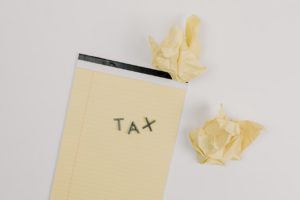Tips For Creating A Debt Payment Plan

When repaying debts, the first step is to develop a budget and prioritize payment plans. Throughout the process of creating an ATO debt payment plan, formulate a monthly budget, which includes the funds needed to meet demand, the amount of savings, debt repayment, and the amount that can be set aside for anything else. If you find that you can use more money for debt or savings, your budget may change, but you should not change the money you pay for everything else. Create a budget so you know how much you will have each month after paying basic bills and priority debt.
Make sure to keep a copy of your budget-you will need to refer to it later. When you request a reduction in the repayment amount, you also need to send a copy to the creditor.
If the lender declines your offer, you need to have a strategy to negotiate tax debt. Start making payments anyway, and let the lender know that you are doing it. Usually, you should simply ask for a lower non-priority debt payments. If you are struggling to pay off debts such as credit cards, store cards, or personal loans, you can ask for lower monthly payments. A fee less than specified in the contract may make it difficult to obtain a loan in the future.
Your credit utilization rate-your total debt divided by the credit account limit you opened for yourself-will remain at a low level because you have paid off your debt and kept your existing credit line open. However, when accepting your monthly loan payment, be sure to track and limit your credit card spending to ensure that you do not encounter another debt that cannot be paid off. In addition, a potential pitfall of debt consolidation loans is to provide you with some credit card debt relief, while providing you with a stable monthly loan, but suddenly available credit prompts you to spend more. You may have successfully reduced your monthly repayment to an acceptable level, but if you continue to use your credit card without paying the full balance each month, you will be burdened with more debt than before after the merger.
 As mentioned above, paying off debt isn’t easy, even if you follow a plan, use a spreadsheet, and stick to a budget. Before adding new debts, try to pay off your current debt. You can’t automatically write off your debt, but you can lower interest and fees, making your payments more difficult. The ATO can also provide help with paying off your debts.
As mentioned above, paying off debt isn’t easy, even if you follow a plan, use a spreadsheet, and stick to a budget. Before adding new debts, try to pay off your current debt. You can’t automatically write off your debt, but you can lower interest and fees, making your payments more difficult. The ATO can also provide help with paying off your debts.
By transferring your debt off existing credit cards with a high annual interest rate, you are removing the interest payments that you would need to make on an open line of credit over a period of time, usually 12-18 months. Extending the term of the loan, you can pay more interest over the term of the loan. By getting a debt consolidation loan from a bank or credit union, you will be able to manage your debts more easily as you only make one payment to the bank or credit union, rather than multiple payments to all of your current creditors. A smart way to manage your debt is to transfer the balance from one or more high interest rate credit cards to a 0% annual interest rate credit card that offers no interest for up to 20 months.
After the lender has paid off your credit card balances, you simply need to pay them back in monthly installments, which can help streamline the process of paying off your debt.
The downside is that since it can take a while to pay off your first debt, you may find it difficult to stay motivated. Also, because you are in debt, instead of splitting your efforts among several, you may pay more than the principal.
Through this debt elimination strategy, also known as debt accumulation, you will pay your bills in order from the highest interest rate to the lowest interest rate. First, no matter which strategy you choose, you need to make a minimum repayment of all debts. To avoid paying extra interest, it might be a good idea for everyone to follow the five steps we outlined above to develop a debt repayment plan. Getting out of debt is a journey, and the most important decision you can make is to start the process.
Since paying off debt can be a long and difficult journey, you need to use your arsenal of motivational tactics to keep up with your plans. By understanding that this is a process and accepting the emotions associated with debt, you will be able to manage your payments, as well as your emotional and mental well-being. However, to avoid excessive interest rates, late payments and late payments, it may be a good idea to learn how to get out of debt and create a workable plan to achieve your goals. In this handy guide, we’ll take a step-by-step approach to creating and implementing a debt settlement program.
You will need to provide complete records of your debts, credit cards, loans, bank accounts and other financial products, as well as information about your personal assets and property. You will then send monthly payments to a credit advisory agency so that they can distribute your funds to your lender until all of your debt is paid off.
When you start planning to pay off your debt, take the time to calculate your base budget or the minimum amount needed to pay your core bills. Once you know your base budget and the minimum you need to pay off your debt each month, you can figure out if you have discretionary income to spend on paying off additional debt. When you enter your expenses, you include all of the current minimum credit card payments that you can use for the next step in paying off your credit card debt.





